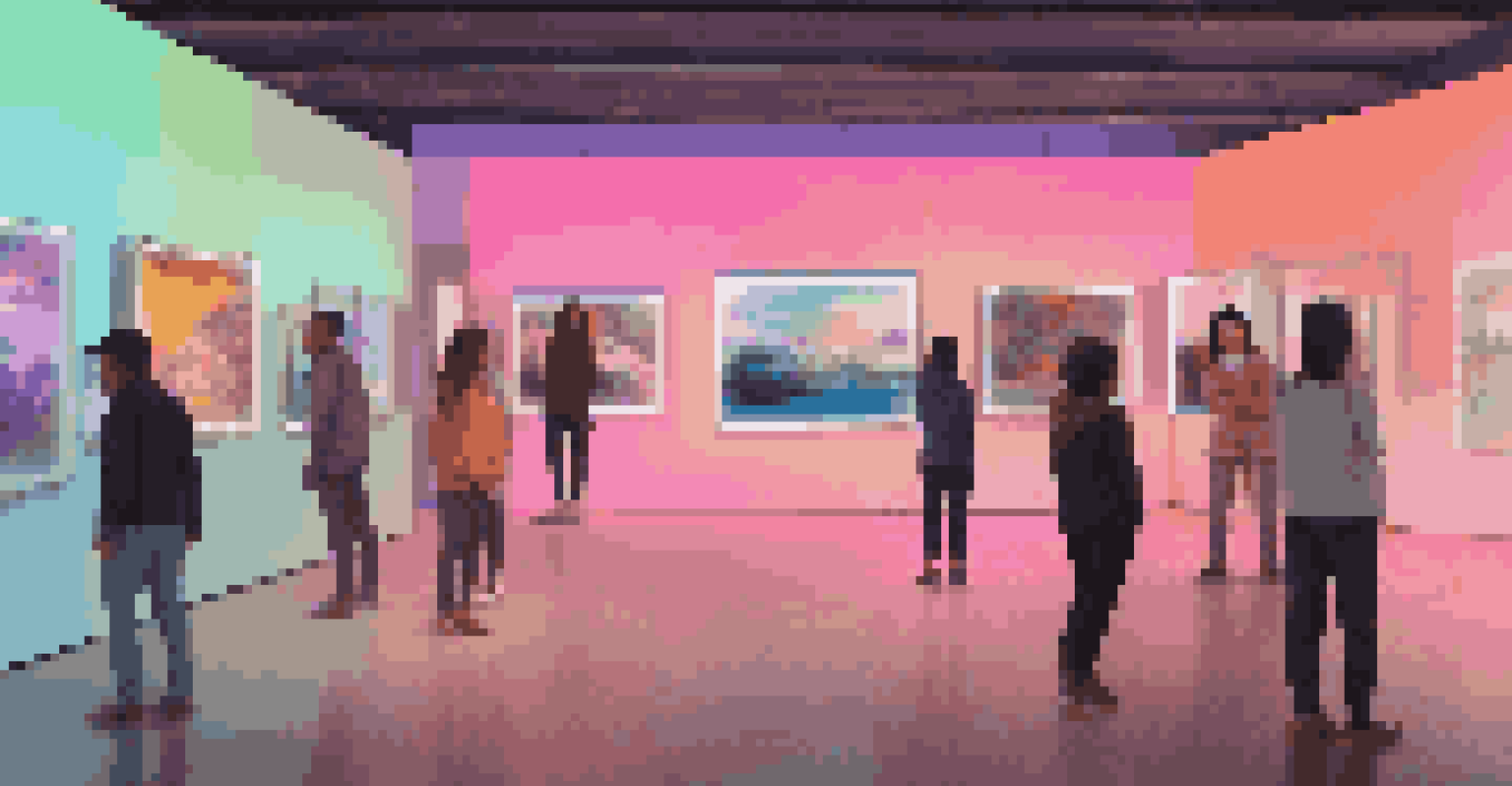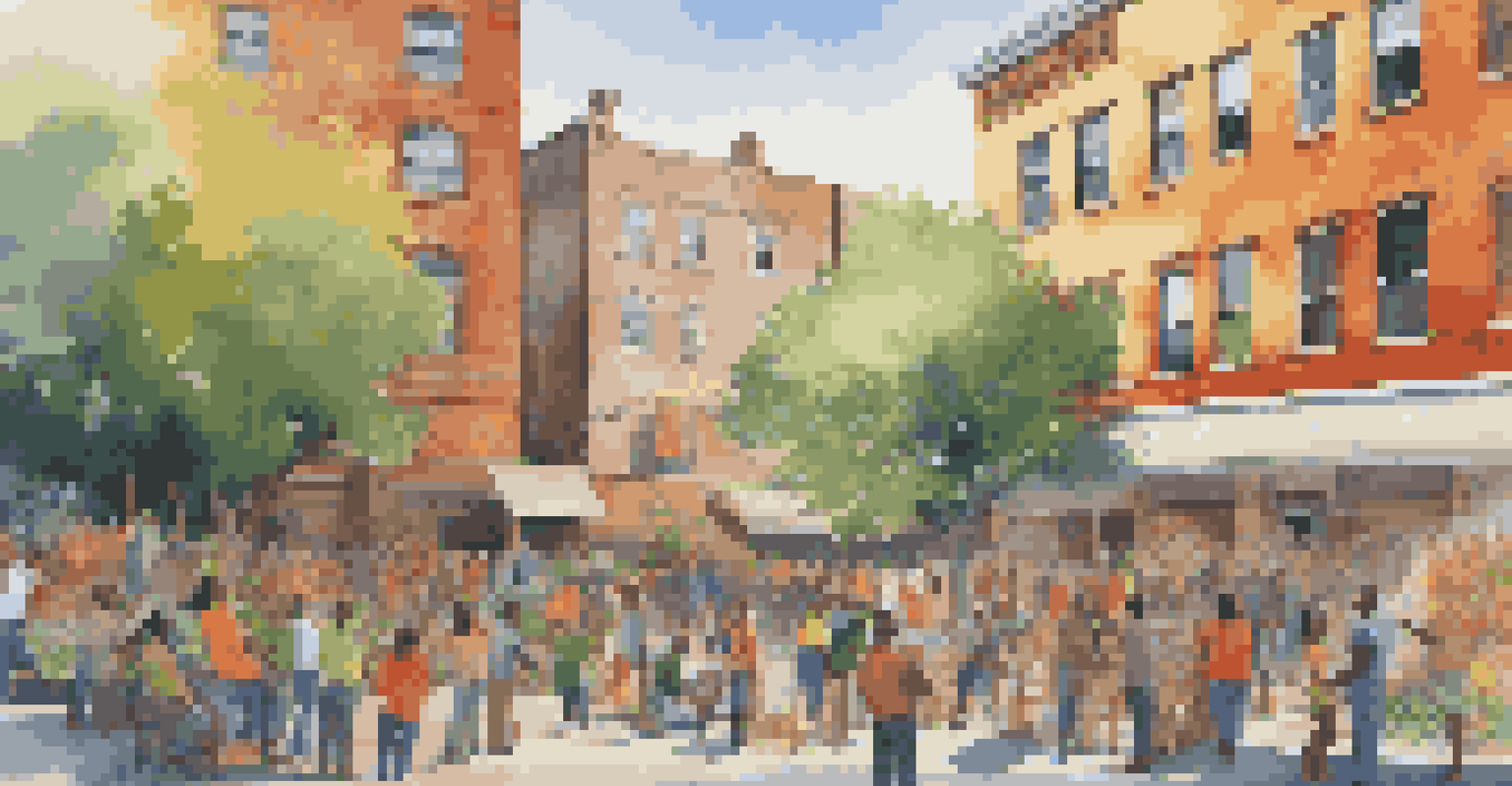The Role of Digital Art in Connecting Remote Communities

Understanding Digital Art and Its Appeal
Digital art refers to creative works produced using digital technology, ranging from illustrations to animations and even virtual reality experiences. Its accessibility allows artists from various backgrounds to express themselves without the limitations of traditional mediums. This democratization of art has made it possible for anyone with a computer or tablet to create and share their work.
Art is the most beautiful of all lies; it is a way of creating a reality that brings people together.
The appeal of digital art lies in its versatility. Artists can easily manipulate colors, shapes, and textures, allowing for experimentation that can lead to innovative forms of expression. This adaptability makes it particularly engaging for communities that may have different artistic traditions or limited access to physical art supplies.
Moreover, digital art often resonates more with younger generations who are immersed in technology. By leveraging platforms where they already spend their time, such as social media, artists can reach wider audiences and foster connections that transcend geographical barriers.
Building Connections Through Online Platforms
Online platforms play a crucial role in connecting remote communities through digital art. Websites like Instagram, DeviantArt, and Behance allow artists to showcase their work to a global audience, breaking down the walls that once isolated them. These platforms not only facilitate exposure but also create spaces for interaction and collaboration.

Through comments, shares, and likes, artists can engage with viewers and fellow creators, forming relationships that might not have been possible otherwise. For example, an artist in a small village can receive feedback and encouragement from someone halfway across the world, fostering a sense of belonging.
Digital Art Connects Global Communities
Digital art platforms enable artists from diverse backgrounds to showcase their work and foster connections across the globe.
Additionally, virtual galleries and art shows have become increasingly popular, allowing artists to present their work in immersive environments. These digital spaces can host discussions and workshops that unite creators and art lovers, enriching the overall experience and solidifying community bonds.
Empowering Marginalized Voices
Digital art has become a powerful tool for marginalized communities to express their stories and experiences. With traditional avenues often closed off, artists can use digital platforms to amplify their voices and highlight issues that matter to them. This visibility is essential in fostering understanding and empathy among diverse audiences.
The future belongs to those who believe in the beauty of their dreams.
For instance, Indigenous artists have utilized digital art to reclaim their narratives and share cultural heritage in innovative ways. Through animations and graphic novels, they can engage younger generations while preserving their history and traditions.
Moreover, this empowerment encourages conversations about social justice and representation. By spotlighting their work, these artists not only validate their experiences but also inspire others within their communities to share their stories and contribute to the digital art landscape.
Fostering Collaboration Across Borders
Digital art encourages collaboration among artists from different backgrounds, fostering a sense of unity and shared purpose. Through online forums and collaborative projects, artists can bring together diverse perspectives to create meaningful works. This cross-cultural exchange often results in unique creations that reflect a blend of influences.
An example of this can be seen in collaborative mural projects, where artists from various countries come together to create a single piece. These projects not only celebrate individual talents but also highlight the power of teamwork and the beauty of diversity.
Empowerment of Marginalized Artists
Digital art provides a voice for marginalized communities, allowing them to share their stories and advocate for social justice.
Additionally, such collaborations can lead to broader discussions about global issues. By working together, artists can raise awareness about topics like climate change, social inequality, or mental health, demonstrating the universal nature of these challenges and the solutions that can arise from shared creativity.
Nurturing Local Talent Through Digital Communities
Digital art communities often serve as nurturing grounds for local talent, providing resources and support for emerging artists. These online spaces offer tutorials, critiques, and mentorship opportunities, all of which can be invaluable for those starting their artistic journeys. By connecting with experienced artists, novices can gain insights that help them develop their skills.
Furthermore, local art groups can leverage social media to showcase their work, attracting attention and potential collaborators. This exposure can lead to opportunities for exhibitions, commissions, or even funding, all of which contribute to the growth of individual artists and their communities.
As these artists gain confidence and visibility, they can inspire others in their community to pursue their creative passions. This ripple effect creates a vibrant local culture, where art becomes a shared experience and a source of pride.
Creating a Sense of Belonging and Identity
For many remote communities, digital art plays a vital role in fostering a sense of belonging and identity. Through shared artistic expressions, individuals can connect over common experiences, interests, and cultural backgrounds. This shared connection can be especially important for those who may feel isolated or disconnected from their local environment.
Artworks that reflect local stories, traditions, or challenges often resonate deeply within a community. When these pieces are shared online, they can spark conversations and create a collective identity that reinforces pride and solidarity among community members.
Collaboration Transcends Borders
Through collaborative projects, artists can merge their unique perspectives, resulting in impactful creations that address global issues.
Moreover, when individuals see their experiences represented in digital art, it validates their feelings and fosters a sense of acceptance. This powerful connection can lead to stronger community ties and a shared commitment to support and uplift one another.
The Future of Digital Art in Community Engagement
As technology continues to evolve, so too does the potential for digital art to engage and connect remote communities. Emerging technologies, like virtual reality and augmented reality, offer exciting new avenues for artists to explore. These tools can create immersive experiences that draw people in and encourage participation, further bridging the gap between communities.
Moreover, as more individuals gain access to the internet and digital tools, we can expect to see an even greater diversity of voices in the digital art space. This influx of talent will enrich the art world, allowing for a broader range of perspectives and stories to be told.

Ultimately, the future of digital art in community engagement looks bright. By harnessing the power of technology and creativity, artists and communities can continue to connect, collaborate, and inspire, proving that art knows no boundaries.